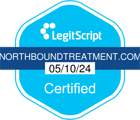The highs and lows of cocaine dependence come fast and furious. A cocaine high usually doesn’t last beyond 30 minutes, and depending on the method of use, sometimes it’s far less than that. During the high, there’s a feeling of euphoria, energy, and high alert. After the crash, it’s a feeling of exhaustion, disorientation, and depression. This back and forth results in damage to the body, brain, and heart. The ongoing cycle of drug abuse eventually leads to addiction, which comes with its own set of withdrawal symptoms to contend with.
The cocaine detox timeline generally lasts for a few days. It includes the immediate crash, intense withdrawal symptoms, and then either relapse or continued symptoms that subside over time. Each case is different due to a person’s individual history with drug abuse and the state of their health and support system. For example, someone who is already in poor health due to or in addition to cocaine addiction may have a harder time with recovery.
Certain cocaine addiction symptoms can last for months and possibly years for chronic users. The same intensity and frequency won’t apply throughout, but they may linger as a result of how cocaine has changed the makeup of your brain. The longer a person has been abusing cocaine, the longer it takes to recover from it.
Also, when a person tries to go through the detox process at home, it’s usually not as successful as when undergoing addiction treatment through a recovery facility. Addiction is the brain’s way of telling you that it needs the drug to be productive or feel alive. The cocaine cravings are too strong and the temptation too great to overcome alone.
Cravings are one of the worst parts of the cocaine detox timeline. They can last far past the other symptoms of discomfort and pain. That’s why it’s common for people to continue using if they don’t seek treatment at a rehabilitation center. At the same time, these cocaine cravings may be intensified by feelings of depression, anxiety, and/or insomnia.
Left untreated, it only worsens the condition of the brain and body. Other cocaine detox symptoms may include aggression, extreme fatigue, and vivid nightmares. Each person goes through the detox timeline and symptoms in a different manner, but these occur frequently for most who are struggling with addiction.
Addiction is a disease and like any other disease there’s no singular pathway to cocaine treatment. The body needs to repair itself, which means healing time may be prolonged. It’s based on the person’s response to it and how well they are able to progress. With the help of medical specialists and therapists to guide you with evidence-proven strategies to cope and abstain from cocaine use in the future, it sets you on the pathway to long-term sobriety.
Cocaine Withdrawal Symptoms
During drug withdrawal from other substances like heroin or methamphetamine, there are often intensely physical symptoms like vomiting or seizures. While these may occur with cocaine detox as well, the symptoms are typically mental or psychological. However, it is no more or less painful or challenging than any other type of substance abuse withdrawal. Here are a few of the main psychological symptoms people experience during detox from cocaine.
Aggression and/or Violence
Cocaine delivers the highest high, which is why they call it a crash for a reason. There’s a long way to come down from and the reaction is on the opposite side of the emotional spectrum. The downside is not a normal state of being, but rather a mentality of aggression, which may lead to violence and other dangerous behaviors. This type of behavior is volatile, which only adds to the feeling of danger if this occurs in the presence of others.
Depression and Suicidal Thoughts
Cocaine addiction leads to an imbalance in the brain. The normal communication methods it is used to are disrupted and now reliant on the presence of cocaine. It becomes the new norm, a feeling that’s difficult to undo when the body has already adapted. The depression that hits when the addiction isn’t fed is such an extreme shift, it can cause suicidal thoughts or tendencies.
This is one of the key reasons why it’s important to go through the detox period under medical supervision who can monitor changes and protect your physical and mental health.
Extreme Fatigue
In general, the crash of a cocaine high or attempting to detox can make the body feel depleted of energy. The confidence and outgoing nature of a cocaine high can be exhausting. Cocaine causes people to be talkative, energetic, and able to complete multiple tasks at once. When the drug is no longer altering the mind to present that illusion, it can feel lethargic, distant, and unable to get out of bed.
Vivid Nightmares
Night sweats and vivid nightmares may occur as the brain tries to recalibrate itself. These could result in shaking, headaches, and other side effects of cocaine abuse on the body. If nothing else, it delivers a general discomfort that’s intense enough for anyone to want to get rid of those feelings in the quickest way possible, which is why relapse happens.
These are only a few of the withdrawal symptoms experienced during the withdrawal period and cocaine detox. As the body adjusts, unpredictability is its own dangerous factor. Without the medical monitoring of an addiction treatment facility, you put your safety at risk, in addition to dealing with all the symptoms you’re experiencing on your own.
Tangible Signs of Cocaine Use Leading Up to Addiction
There are many ways to abuse cocaine. It can be snorted, injected, or inhaled. With each of these methods, there are certain signs of cocaine use. In all cases, it can cause irritability, restlessness, and cardiovascular events, such as a heart attack or stroke.
When snorted, paraphernalia like white residue on flat surfaces, like a mirror or book, and in plastic baggies may be an indicator of cocaine use. Frequent nosebleeds and constant sniffing are also signs of snorting cocaine as well, in combination with other signs and symptoms.
When cocaine is injected, used needles and syringes may be left lying around. There may also be bruise marks at the injection sites, although, these are often kept hidden from others. Cocaine abuse by injection also increases the risk of transmitting blood-borne diseases like HIV/AIDS and hepatitis C.
Finally, if cocaine is smoked, the inhalation can damage the lungs and make it hard to breathe, as well as cause respiratory issues. Regardless of the method a person uses for cocaine, the signs are often significant for loved ones who are witnessing the mood swings and secretive behavior. Cocaine use doesn’t always mean addiction is already at play, but it does mean it’s not far behind.
A Combination of Care to Promote Long-Term Sobriety
Seeking treatment is a personal path, no two situations are alike. With the safety and security of medical monitoring, it’ll provide the structure and support to help you get through the most challenging parts of your addiction and recovery. You and your dedicated care team will come up with a plan together.
It may feel like you can go through the withdrawal process and addiction problems on your own. And technically, you can. However, in order to have a better chance of long-term success, the value that treatment in a detox facility provides is best. There are people and resources you simply don’t have in your own at-home environment that are crucial to your healing.
In your current environment where your addiction began, there are temptations and influences that will feed your cravings. There is also no support or motivation to change behavior, which can make it easy to relapse and slip back into the cycle of addiction. Ongoing treatment pulls you out of that environment and provides you with encouragement, accountability, and education about addiction to start creating a healthier pathway and develop strategies for how to treat cocaine addiction by coping with these in the future.
During the detox program, your care team may decide to administer medication in order to ease cravings. This may make the withdrawal period feel like it’s going by faster or at least a little more comfortable. Pharmacological treatment alone isn’t enough to maintain sober living. It is one immediate solution during the first stage of the treatment program. It’s the care that comes after that has the most impact.
Treatment is the chance to look at addiction as a whole, not just the signs and symptoms. During the course of rehab, there will be scheduled therapy to look into issues that may have led to the addiction and what will prevent them from happening again.
Both types of care are important. The pharmacological route takes care of the surface for the short-term, while behavioral therapy digs at what’s deep-rooted to maintain the long-term solution. This deeper understanding will help as you learn which strategies and tools will reduce stress, discomfort, and temptation in the future.
Addiction is not a curable disease, but it is treatable. Maintaining a happier, healthier, sober lifestyle requires constant effort and attention. With the guidance and knowledge of others who have seen similar experiences and know the ins and outs of what going through detox and treatment looks like, it will set a foundation to allow you to feel secure enough to keep going.
Source:
National Institute on Drug Abuse. “Cocaine DrugFacts | National Institute on Drug Abuse.” Drugabuse.gov. N.p., 13 July 2018., https://www.drugabuse.gov/publications/drugfacts/cocaine
Author
-

President, CEO & Founder at Northbound Treatment Network
Paul Alexander is the CEO, President & Founder of Northbound Treatment Network in Newport Beach, California. He believes wholeheartedly in transformational leadership, organizational health and effective, fully integrated substance use disorder and mental health treatment. With over 27 years of experience in behavioral healthcare, Paul has extensive knowledge of “in vivo” treatment modalities, clinical development, operations, strategy, marketing and financial planning. He has been widely recognized for his development of collegiate-based residential treatment programs for students in recovery and authored a research study at The University of California confirming this modality’s effectiveness.
Paul’s comprehensive professional experience, willingness to innovate, and emphasis on organizational health are vital factors in Northbound’s continued success. Paul received his Certified Addiction Treatment Specialist training at Saddleback College in Mission Viejo, CA, and was awarded Outstanding Alumni Service Award in 2002. Paul holds a Bachelor of Arts degree in Criminology, Law and Society, Summa Cum Laude, from University of California, Irvine, and a Juris Doctorate degree from Loyola Law School of Los Angeles. Paul currently serves on The National Association of Addiction Treatment Providers (NAATP) board. In addition, he serves on The Family Recovery Foundation board and The CarePossible board in Orange County; both organizations are committed to raising funds for family recovery and treatment for former military personnel. Paul is in recovery himself and lives in Orange County with his wife Silvana and his two young sons, Noah and Dean.










